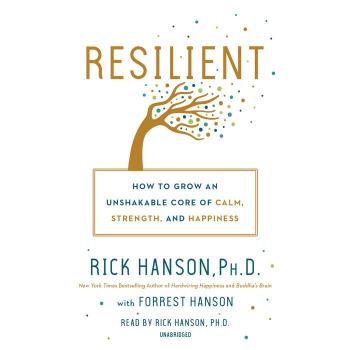
The goal of this book is to share how one church successfully plants another. Using the phrase “sponsoring church,” this will end up being the textbook for sponsoring churches who want to plant other churches. The book is divided into seven parts.
The authors (Rodney Harrison, Tom Cheyney, and Don Overstreet), worked together to explain the “nuts and bolts” of church planting. This begins with sharing a theology and history of church planting. Church planting has its roots in the Great Commission as outlined in Matthew 28:19-20. The authors jump from the first century to the nineteenth century and the Sandy Creek Baptist Church for the theological basis of church planting. The authors compared the church planting efforts of the churches at Jerusalem, Antioch, and Rome. One wonders if there was church planting through the Roman Catholic church, as well as other denominations through the centuries.
The authors shared attitudes toward church sponsorship through a series of surveys. Overall, there was a great ignorance to the idea. While many pastors agree that the local church should sponsor new churches, there is a fear that the new church plant will fail (34-36). Apparently, there is a great need for training pastors in the art of sponsoring churches.
Whatever the fears and difficulties about sponsoring churches, the facts point to sponsoring churches as the most effective evangelism strategy. For example, the authors point out that churches aged three years old or less average double the amount of converts as churches aged three to fifteen years old (60). Obviously the benefits outweigh the risks, if a church plant is properly supported. The authors note that Saddleback Church was sponsored using the 5-1-5 strategy by the Home Mission Board. The church was successful because it received a high level of healthy support by multiple sponsors (54). This reviewer concurs with the assessment that multiple sponsorship for church plants is the most effective method.
The authors also share a variety of church planting models which have worked. These models include: (1) becoming a sending church, (2) a multi-site church, (3) sponsoring Set Free Churches, (4) sponsoring ethnically diverse churches, (5) the multi-sponsor approach, and the (6) church split. This reviewer agrees with all of these methods, but believes that it takes a certain mindset in order to be prepared to sponsor churches. Experience has shown that the sponsoring church needs many “sweet taters” (72) – people who will be cooperative in planting a church.
In many areas of the United States, sponsoring an ethnic church could be the starting ground for many churches to become effective sponsoring churches. There are challenges in sponsoring an ethnic church, such as looking beyond race, language, culture and social status (101). However, because of the cultural difference, the objection to sponsoring churches (we don’t need another church in our area because there are enough) would probably be eliminated.
The most difficult method would be a church split. While this reviewer agrees that a “splat” (a church split that becomes a church plant) can be productive (102), experience has shown that this has hardly ever been the case. The stigma of a church split affects the bitter group that split off for many years. The fact that a church split is “justified” because of the compromise in the pastor, deacons, or workers (103) seems to this student to be a stretch. However, just as every Christian needs forgiveness for sins that destroy relationships, churches need the same forgiveness. Therefore, this doctoral student is encouraged by the suggestion that a church can adopt a church split (105-106).
Milestones are important for success. This book shares milestones for the success of sponsoring churches. They include (1) developing vision, (2) portray the vision, (3) prepare to coach and mentor, (4) send out a church planter, (5) develop a church-sponsoring resolve, and (6) look toward the future. The first four milestones are fairly easy to accomplish. Developing church sponsoring resolve is the hardest milestone. It is when the sponsoring church begins to see the progress of the church plant that difficulties arise. Some sponsoring can get jealous, and others can get controlling. The idea of giving up control of the church plant to a new generation can be very difficult. Therefore is very important that a sponsoring church has a good recovery strategy (116).
This church planter student met the hardships described in the book (148-150) through personal experience. Proverbs 24:16 is an important lesson to learn – “get back up.” Resilience is the backbone to church planting (151).
The assessment by the authors that teams are needed to sponsor churches is correct. The book shared a variety of team members that can be counted on to sponsor a new church plant. The team approach helps in recruiting the church planting core group, finding the church planter, and in discovering financial resources. In the area of financial resources, the most insightful statement was this: resources are in the harvest. This has been true in this reviewer’s church planting experience. While it is helpful to have money before one goes on the field, one needs to have faith that God will provide those resources in the harvest.
The final third of the book is filled with relevant insights based upon experience. Church planters are successful when they build a network (208). Sponsoring churches should have an agreement in writing with the church plant. Church planters will go through the phases described in this book. One should expect it. There will be a courtship phase, a clashing phase, a resentment phase, a confirmation phase, and a compensation phase (218-222). This will happen. Mistakes will be made on both sides (232-255). This reviewer’s experience has shown that prayer seems to be the most neglected part of church planting.
The book has a very strong biblical basis and hermeneutical foundation. However, the book contains more application than theological reflection. This reviewer found very little with which to disagree. As a matter of fact, this reviewer’s head nodded in agreement very often while reading of this book. This book complements many other books about church planting. The strength of this book is the fact that is spends it time addressing the specific needs of sponsoring churches. Most books address the church planting side of church planting. For example, church planting books like Purpose Driven Church by Rick Warren, Churches with Roots by Johan Lukasse, Planting New Churches in a Postmodern Age by Ed Stetzer, Launch by Nelson Searcy and Kerrick Thomas, and Starting a New Church by Ralph Moore are all addressed to the church planter. This book provides a balance needed in the field as it is addressed to church sponsoring pastors. As a result, this book will stand out as the classic textbook about how to sponsor churches.












